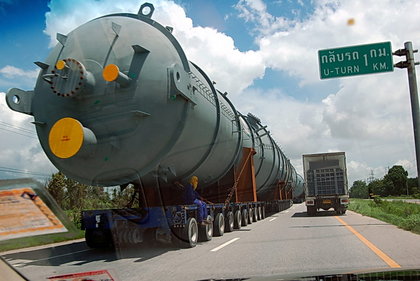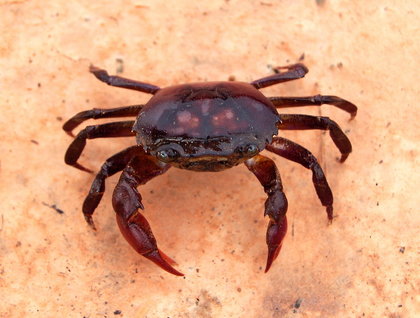Four or five months ago, Nam’s mother had couple of pitaya plants shipped back from her hometown of Surin (famous for their annual elephant festival and silk weaving). They were pitiful little things tied to a curious looking concrete dais-in-a-planter type of setup. I kept meaning to take photos of them back then for before and after comparison photos, but it was only a few weeks before they started shooting up, doubling, tripling, and growing to ten times their original size…. And they aren’t even full grown yet.
The thing is, we kind of forgot about them sitting there in the yard, because aside from their utterly alien appearance close up, they were just green plants on a green background, and truly unremarkable otherwise… during the day. Last week we went out for a drink for the first time in a while and returned around midnight. This is what was waiting for us:
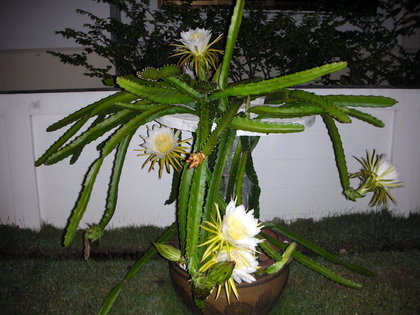
Feed me, Seymour!
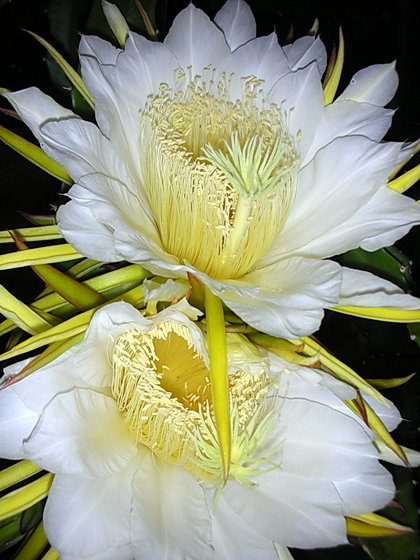
Get outta my way! – Survival of the fittest.
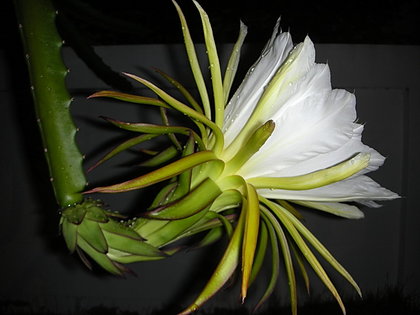
God must have been going through his “Giger” phase
(all photos by Nam!)
//////////////////////////////////
Bonus “strawberry pear” trivia: In Thai, they call the pitaya (aka dragonfruit) a “dragon’s egg,” which is probably the most apt name for anything, ever.
Month: August 2007
Fugu me? No, fugu you!
From the “you shouldn’t be eating salmon in Thailand anyway” department:
BANGKOK, Thailand (AP) – Unscrupulous vendors in Thailand have been selling meat of the deadly puffer fish disguised as salmon, causing the deaths of more than 15 people over the past three years, a doctor said Thursday.
Although banned since 2002, puffer fish continues to be sold in large quantities at local markets and restaurants, said Narin Hiransuthikul of Bangkok’s Chulalongkorn University Hospital.
“Some sellers dye the meat of puffer fish and make it look like salmon which is very dangerous,” Narin said.
Narin said over the past three years more than 15 people have died and about 115 were hospitalized from eating the fish.
The ovaries, liver and intestines of the puffer fish contain tetrodotoxin, a poison so potent that the U.S. Food and Drug Administration says it can “produce rapid and violent death.”
The fish is called fugu in Japan, where it is consumed by thrill-seeking Japanese gourmets for whom the risk of poisoning adds piquancy.
Every year, there are reports of people dying or falling sick in Asia from eating puffer fish. Eating the fish can cause paralysis, vomiting, heart failure and death.
(Full story)
I call bullshit on this story. It sounds like an urban legend. Color aside, puffer meat neither looks nor tastes anything like salmon meat… and anybody that unfamiliar with the fish in question wouldn’t have to be convinced that it was salmon in order to buy it. It could just be sold cheaply, as is. Why go to the trouble of dying it?
Also, the second to last paragraph about Japanese eating fugu for thrills is something oft-seen in the foreign press, but was never evident in all the years I was living in Japan (everybody I knew ate fugu because they liked the taste). I’ve even heard claims from Japan know-it-alls that fugu chefs leave just enough tetrodotoxin on the flesh to give a thrill (but not enough to kill), but I never saw any evidence of this either. The two fugu chefs I asked about it laughed at the question. They also stated that the chances of convincing a licensed fugu chef to prepare fugu livers, ovaries, or intestines for a customer’s thrills are pretty much zero these days.
The Swearers
I really needed this today: Don’t watch if you don’t like rude words
(via the b3ta newsletter)
BONUS: Bleach on fabric tutorial (cool t-shirt design method)
Carabao’s Made in Thailand Cover by Farang
In my ten months here, I’ve heard this song (which was written by Carabao) performed live dozens of times by many bands… As corny as this clip might seem, this guy’s rendition is the best I’ve ever heard.
I basically cannot stand pop music from any country, but Thai pop is especially insipid IMHO. The traditional Thai music is fascinating, though, even if I can’t understand 90% of the lyrics. It has a lot to do with the energy of it, the groove, especially a live performance.
(thx t)
Quick note about comments
Commenting here may take multiple tries and/or some patience… Please hang in there. The blog software I’m using is due for a major overhaul very soon, and things should get better. In the meantime, don’t let my overworked server and bloated software get in your way – LET YOURSELF BE HEARD! – the other three readers of this blog will appreciate it.
Kelp Highway
Were America’s first inhabitants Japanese fishermen?
Erlandson has been working with marine biologists for the last few years and believes Japanese fisherman could have been following the kelp highway which would have flourished even during the ice age. The kelp would have been attractive to all kinds of fish because it provides shelter and as well as giving nutrients to other sea creatures.
Mike Graham, a kelp expert who helped Erlandson, told New Scientist, “It’s quite likely that Japan’s ancient inhabitants were familiar with these systems before they came over. What people saw, as they moved, were familiar species, familiar ways of life, familiar associations.”
Well, if anyone would ever try to eat a garibaldi, it would be a Japanese fisherman.
Carabao Bike & Death Merchant
Yesterday, on the way to check the progress of the new house we’re building, we came across a couple of awesome motorcycles, one right after the other.
First up was a kid riding the Buffalo Bike (aka Carabao Bike):
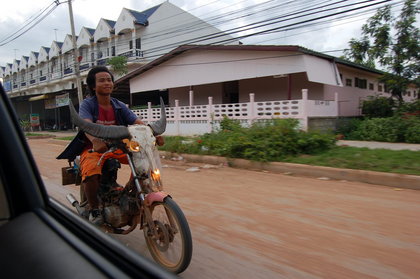
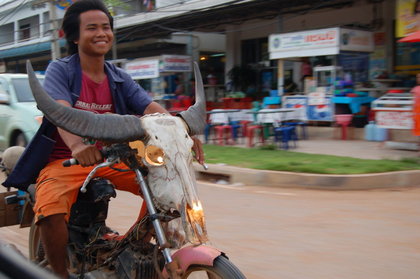
Next was the Death Merchant (I talked about his trade before in this post: Banks and Blades and Monster Geckos):
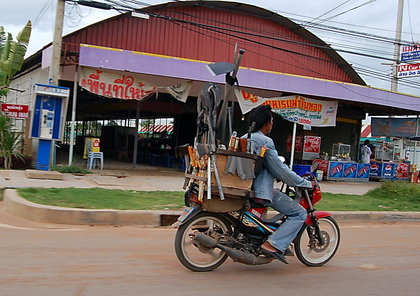

All photos by Nam.

